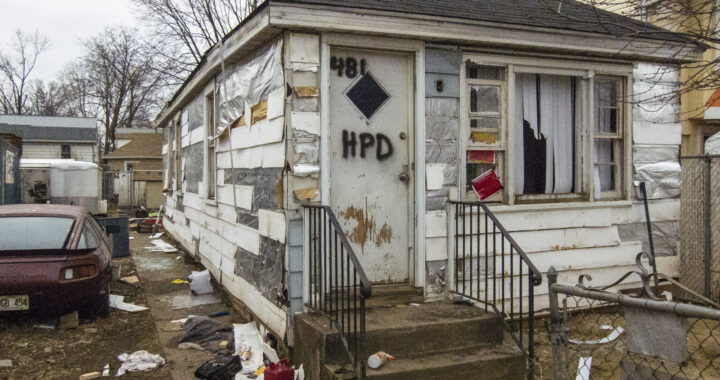What are the most common things that fail a home inspection?
I’m often asked about the things that fail a home inspection. I’d like to start by saying there is no such thing as a pass/fail home inspection. The buyer decides what items on the home inspection report will fail the home inspection. Many things may be negotiable with the seller, so before cancelling the sale, talk to your realtor about filing an Inspection Objection.
However, there are a handful of items on the home inspection report that are more concerning than others. As the buyer, you’ll want to negotiate these with the seller or have a plan to fix them after closing. For sellers, a home inspection report can help you identify and resolve problems before your home hits the market.
Top 10 things that fail a home inspection:
1. Structural issues:
Structural issues top the list of things that fail a home inspection as they can be costly to fix. Cracks in the walls and sloping floors may indicate foundation settling. Horizontal cracks, bowing, and deflection might point to structural movement. The sooner these problems are discovered, the better.
Structural issues and foundation problems are usually caused by expanding soil. If water isn’t properly directed away from the home, the soil surrounding the home expands and contracts, which can damage the home over time. Homeowners in Littleton and along the Front Range should be especially aware of potential structural issues due to the prevalence of bentonite clay in the Colorado foothills.
Minor cracks and settling is to be expected in older homes. Don’t panic if your home inspector marks these in the report. Your home inspector will likely recommend further evaluation from a structural engineer to determine if these cracks are cosmetic or in need of repairs. Minor repairs involve filling cracks and sealing foundational walls to prevent water intrusion. Severe foundation problems may cost tens of thousands of dollars to fix, so any concern with the structure of the home is worth evaluating by a structural engineer.
2. Sewer line problems:
Home inspectors often recommend a sewer scope as part of the inspection process. This is because undetected sewer line problems can lead to costly repairs. Unless the homeowner had a sewer scope recently, odds are the seller is unaware of the condition of their sewer line.
Damage to sewer lines is not uncommon. Tree roots, settling, and even inconveniently placed heavy boulders have the potential to damage sewer lines. Older homes often come with clay sewer pipes that are more susceptible to damage. Severe sewer problems can lead to sewage backups in the home, sinkholes in the lawn, foundation issues, mold growth, and other problems.
A sewer scope checks for blocks or damages to the sewer line. Often, problems may be identified before they become severe. Most inspectors recommend an annual sewer scope as part of home maintenance.
3. Aging roof:
Asphalt shingles have a lifespan of roughly 30 years, but in Colorado, hail damage and long winters reduce that lifespan. Most home inspectors recommend that an older roof is replaced before it starts leaking. Missing or damaged shingles lead to water intrusion in the home, which may cause mold or wood rot. An opening as small as a nickel invites mice into the attic, where they nest in the insulation.
As a new roof may be a costly prospect, many buyers consider it one of the things that fail a home inspection if the seller is unwilling to negotiate.
4. Federal Pacific Stab-Lok electrical panel:
The circuit breaker panel is where the electricity in the home comes together. Different areas of the home are wired to individual circuit breakers. Their function is to cut off power in case of overload and prevent fires. In my article, Dangers of Federal Pacific Stab-Lok Electrical Panels, I explain how Federal Pacific panels manufactured before the 1980’s are responsible for over 2,800 house fires/year.
Though the company was shut down, I still find these panels in many homes built before the 1990’s. I recommend these panels be replaced for the homeowner’s safety. If your home contains a Federal Pacific panel, only the panel needs to be replaced, not the wiring. This can be done by a qualified electrician.
5. Polybutylene pipes:
Prior to 1995, polybutylene plumbing systems were built into millions of homes as an inexpensive alternative to copper. Unfortunately, these pipes had such a high failure rate, they were banned by building code following multiple lawsuits. The pipes were made with a plastic resin that was prone to bursting.
Polybutylene pipes were installed as water supply lines only, and the cost of replacing them depends on the length of pipes in the home and the difficulty of reaching them. Most inspectors recommended the pipes be replaced or at least inspected for integrity.
6. Mold:
Many people have allergies or sensitivities to molds. For these people, prolonged exposure to mold can lead to serious health problems. Recent headlines regarding the toxic black mold, Stachybotrys, inducing severe health problems and deaths, have many home buyers panicked about mold.
The reality is that mold is a common problem in every household. Any space that is dark and damp without adequate ventilation is likely to encounter mold. But most molds are generally harmless and can be cleaned up easily with vinegar and water. The toxic black mold, Stachybotrys, is incredibly rare.
If mold has been left to become a large problem, like in the case of a leaky pipe behind a wall, it might entail a costly cleanup job. For someone with allergies, this may be something that fails home inspection. Any buyer who is concerned about mold should consider mold testing during the inspection period.
7. Pests:
Depending on your locale, you may be prone to a number of household pests. In Colorado, ants, bedbugs, mice, and spiders are some of the more common pests. Your home inspector will tell you if he sees any signs of infestation, including droppings, dead insects in windowsills, black widows nesting in window wells, etc.
While it’s common for the occasional mouse or spider to find its way into your home, your home inspector can often pinpoint the signs of infestation. In my business, one of the first things I check for upon entering a home are bedbugs so I may alert the buyer and realtor to wait outside and not set down their bags or coats. For anyone who has suffered a bedbug infestation in the past, this may be something that fails home inspection.
8. Aging furnace:
A furnace’s serviceable lifespan is 25 years, though it’s not uncommon to find furnaces still working after 30+ years. Most buyers are turned off to furnaces approaching their serviceable lifespans as the cost of replacement averages $4000 to $8000.
While I don’t recommend replacing a working furnace just because it’s old, I recommend buyers be prepared to finance a replacement in the future. Sellers who do not wish to replace their aging furnace prior to selling should be aware that it will most likely come up on the Inspection Objection. Before listing the home, talk with your realtor about how to best handle the furnace objection if it comes up.
9. Health concerns:
In Colorado, one of the most common buyer health concerns is radon. I often recommend radon testing as part of the inspection process due to Colorado’s higher than average radon levels. For more information regarding radon check out my article, Why Test for Radon?
Other examples of health concerns include asbestos insulation or lead based paint. These issues will be particular to the buyer, as they’re not likely to cause problems unless the buyer is planning some big construction projects.
When it comes to addressing health concerns, the best thing the seller can do is have a pre-listing home inspection to identify problems before hitting the market.
10. Safety hazards:
Some examples of common safety hazards include missing window well covers, stairs without railings, lint buildup in the crawl space, missing outlet covers, improperly secured decks, or anything that might lead to injury, fatality, or fire.
Often these problems are easily fixed by the homeowner or a skilled handyman. They may be things that fail a home inspection if you’re unwilling to work with the buyer to get them fixed before closing. No one should live in a home that might harm them. For this reason, I bring up serious safety hazards with the homeowner as well as the buyer.
Dealing with things that fail the home inspection:
While these are all big issues for health, safety, or financial reasons, there’s no reason the home should fail inspection if the buyer and seller are willing to negotiate.
Whether you’re buying a home that may have some lurking problems, or selling a home and worried about the buyer’s home inspection, here are some tips to get you through the inspection period:
- Keep an open mind and be willing to negotiate.
- Trust your realtor to advise you on the best way to move forward on inspection items.
- As the buyer, don’t simply demand the seller make repairs. Explain to the seller why the items on your Inspection Objection are important to you.
- As the seller, there are multiple ways to respond to an Inspection Objection. Talk to your realtor about the best way to handle it.
References:
How Often Should You Replace Your Roof?
Sewer Scope Inspection: Everything You Need to Know

